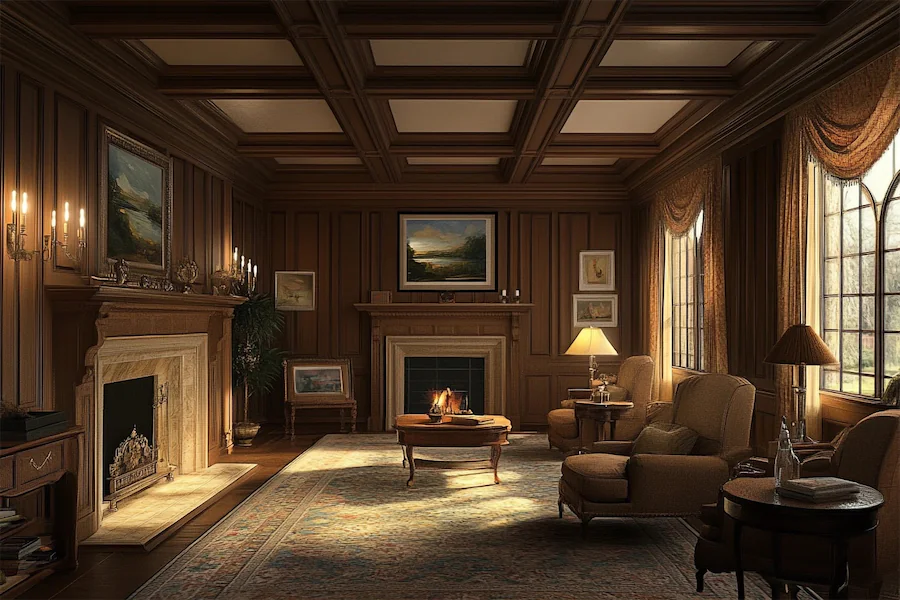Designing a Colonial Revival entertainment room involves blending traditional American colonial aesthetics with modern functionality to create a space that’s both elegant and inviting. Here’s a comprehensive guide to achieving this timeless style in your home.
Introduction to Colonial Revival Entertainment Rooms
Colonial Revival is an architectural and interior design style that seeks to revive elements of American colonial architecture. Emerging in the late 19th century, it became most popular between the 1920s and 1940s. This style is characterized by its nostalgic appeal to the architectural elements and interior design features of early American colonial architecture.
History and Origins of Colonial Revival Style
The Colonial Revival style emerged in the United States in the late 19th century as a response to the nation’s desire to establish a clearer national identity by reviving and celebrating architectural elements from its colonial past. It drew inspiration from early American colonial architecture, emphasizing symmetry, traditional materials, and classical details.
Key Features of Colonial Revival Entertainment Rooms
- Symmetry and Layout: Rooms are typically arranged symmetrically, with a central focal point such as a fireplace or entertainment center. This balanced arrangement promotes a sense of order and formality.
- Color Palette: The style often features a muted, natural color palette, including soft blues, browns, greens, and yellows, which blend seamlessly with natural wooden flooring.
- Materials: Traditional materials like wood are prevalent, with polished wood floors and wood paneling being common. Brass hardware and candle sconces also contribute to the classic aesthetic.
- Furniture: Furniture pieces are inspired by 18th-century designs, blending functionality with an elegant, classic aesthetic. This includes sturdy, functional pieces with slender straight lines and curves.
- Architectural Details: Features such as crown moldings, wainscoting, and built-in cabinetry are common, adding to the room’s traditional charm.
Applications of Colonial Revival Style in Entertainment Rooms
- Layout: Arrange furniture to promote conversation and comfort, maintaining symmetry around a central focal point like a fireplace or entertainment center.
- Entertainment Center: Choose a media console that complements the room’s traditional aesthetic, perhaps incorporating wood paneling or classic design elements.
- Lighting: Incorporate traditional lighting fixtures such as chandeliers, wall sconces, or table lamps with fabric shades to provide warm, ambient lighting.
- Textiles: Use natural fabrics like linen or cotton for curtains, upholstery, and cushions. Patterns such as toile, florals, or stripes in muted colors reinforce the colonial theme.
Considerations When Choosing Colonial Revival Elements
- Balance: While the style emphasizes traditional elements, it’s important to balance them with modern comforts to ensure the room remains functional and inviting.
- Authenticity: Incorporate antique or reproduction pieces to lend authenticity, but don’t hesitate to blend in contemporary items that complement the overall design.
- Functionality: Ensure that furniture and accessories are not only aesthetically pleasing but also functional, especially in an entertainment room where comfort and usability are paramount.
Conclusion
A Colonial Revival entertainment room combines traditional American colonial aesthetics with modern functionality, creating a space that’s both elegant and inviting. By focusing on key elements like symmetry, traditional materials, and classic furnishings, you can transform your entertainment area into a haven of timeless charm.
